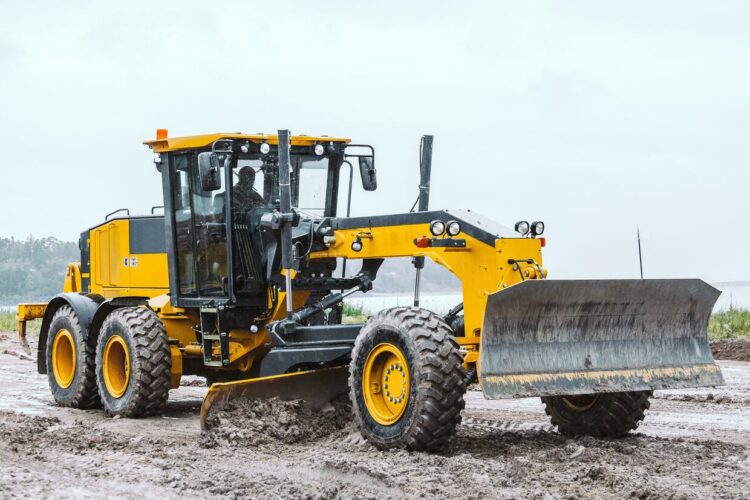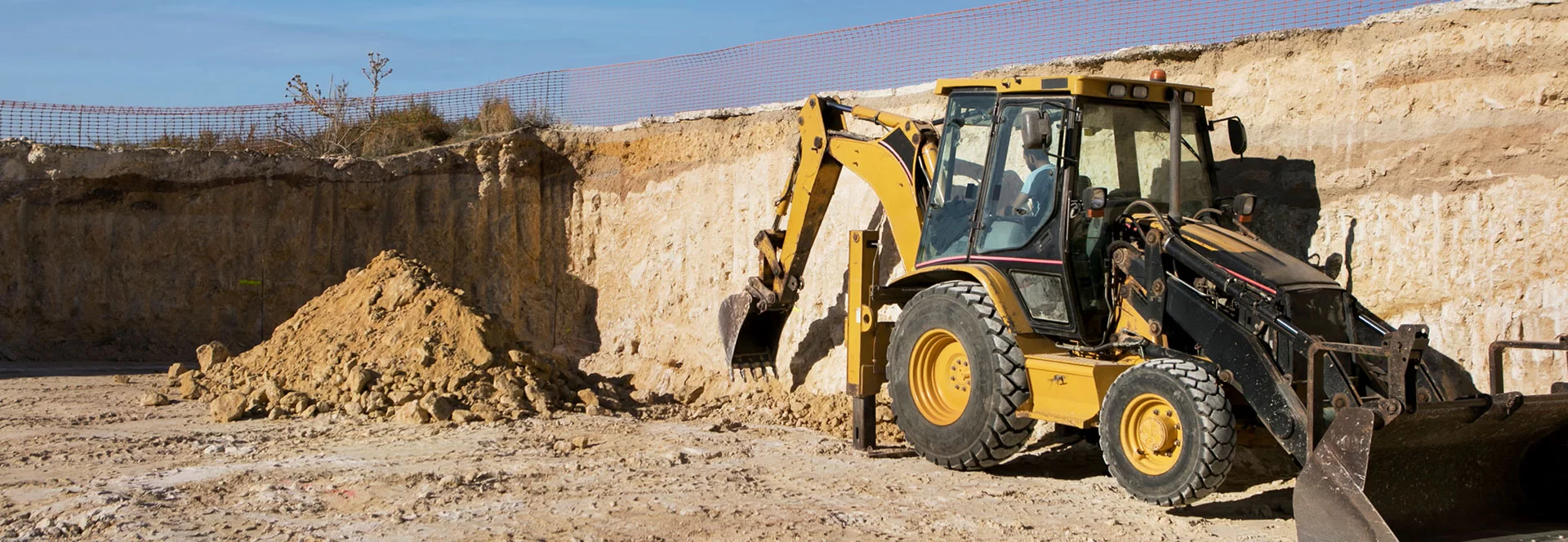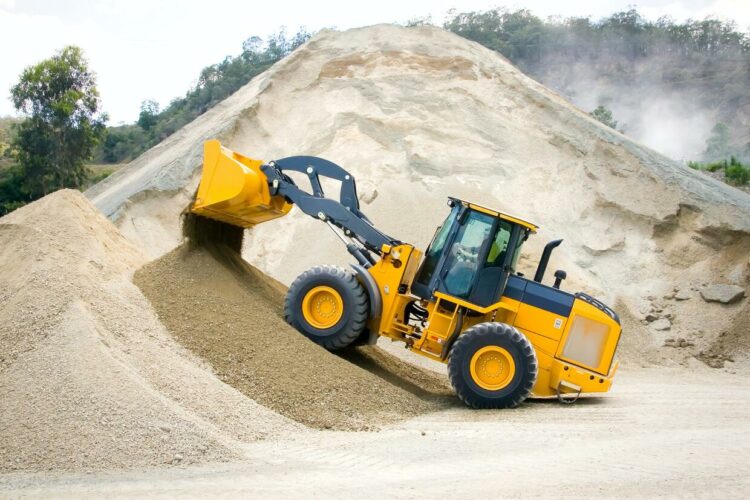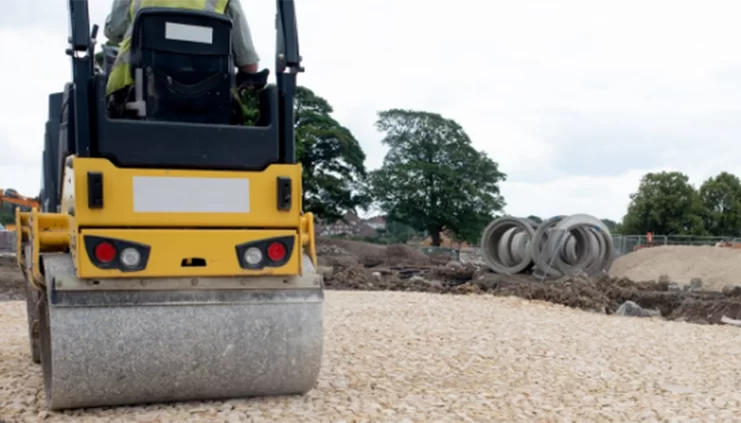When it comes to constructing foundations, roads, and any other ground surfaces, achieving a flat and even surface is crucial for the final product. In the past, grading was done through manual labor or draft animals hauling blades across project sites. With technological advancements, grading can now be done efficiently and as accurately as possible.
However, there are different types of graders in the market, so knowing which one to use can give you the best value for your investment. If you’re unsure which unit is best for your needs, our team at National Dispatching is happy to recommend the most suitable one for your project. Contact our team, or keep reading to learn about the types of graders available.
What Is a Motor Grader?
Also known as graders or blades, motor graders are earthmoving equipment used to create flat surfaces. During construction projects for foundations, roads, railways, or landscaping, teams need either a level base or a slope at a specified angle. To certify that the ground is at its desired level or angle, graders are used to ensure that the project site is free of any bumps that affect the final output.
Graders are recognized by their long shape with three axles. The first axle controls the steek no ring wheels at the front of the unit. The second one holds the attached blade or moldboard that’s used to even surfaces or slopes. Finally, the third axle holds tandem wheels under the cab and engine. Graders can have the following attachments:
- Ripper: These are usually installed at the back of the grader and are used to break solid areas and loosen the dirt.
- Snow Wings: These are attached to the back axle on an angle at both sides of the cab. Available as either mast or mastless, they are typically used to clear snow on the road.
- V-Plows: Often used with snow wings, these are attached in front of the steering wheels. They reinforce the grader in case of snow or other debris that makes it difficult to clear with regular attachments.
- Tire Chains: These are attached to the wheels and are used in the winter or when performing heavy-duty projects with unstable terrain. These help the grader gain traction and reduce the risk of sliding.
- Straight Front Blade: This is a second blade attachment in front of the steering wheels. These can come in various sizes and provide versatile functions to ensure a more leveled ground.
- Front-Mounted Hydraulic Brooms: This is the circular broom attachment that helps the grader remove rocks, debris, or any other loose materials.
In most construction projects, motor graders are often used in tandem with bulldozers and excavators. Bulldozers clear land by pushing away any loose materials, rubble, and dirt. Excavators assist with demolition, leveling the ground, and, if necessary, digging holes. The grader then finishes the task by finely leveling the project site.
Different Types of Graders
Motor graders are sorted according to the size of their blades so that you can choose between large, medium, and small motor graders. Additionally, there are two specialized types of graders: the rigid frame motor grader and the articulated frame motor grader.
Large Motor Graders
Large motor grader units are also called heavy motor graders. These are for large-scale projects such as mining and constructing large residential complexes, residential buildings like condominiums, and commercial buildings. These are proportionally larger than other graders and may require additional steps for operators to enter the cab.
Today, the largest motor graders are much smaller, with some units providing up to 249 HP. In the past, the largest motor grader measured over 7.3 meters, weighed 181,437 kilograms, and had a blade of 9 meters long. However, trade restrictions prevented it from being used, eventually scrapping it.
Medium Motor Graders
Medium motor graders have longer blades and larger wheels. These are commonly used for public works such as streets, highways, and roads. They can also be used for large construction sites and hard-packed locations that need more power than a small grader.
These types of graders are better for those in medium to large-sized construction sites or for any applications used for the road. For more narrow streets, though, consider small road graders instead.
Small Graders
Small road graders have the least power, with units offering 145 to 190 HP. They also have the shortest blade compared to the other grader types. These are enough for small-scale projects that don’t require extremely high power or more extensive reach.
The most significant advantage of small motor graders is their maneuverability, especially in tight spaces. Operators can easily navigate areas with limited space, such as small construction sites, garden landscapes, and small fields. Small road graders are also ideal for unpaved roads.
Rigid Frame Motor Grader
These units are used for everyday grading tasks, most popular in farming and construction. It has four wheels affixed to the frame, with two on either side. The blade is hinged onto the frame and, unlike the typical grader, swings back and forth depending on the entire grader’s movements. Instead of the steering wheels being at the front of the grader, the operator uses the push bar at the back to steer.
Articulated Frame Motor Grader
Articulated frame graders are used for large-scale projects. Each unit has two wheels larger than the others and attached to their own steering wheel. The blade’s angle is guided using the steering wheel when in operation. The advantage of using this grader type is its better maneuverability in narrow spaces, as the operator has better control over the two wheels.
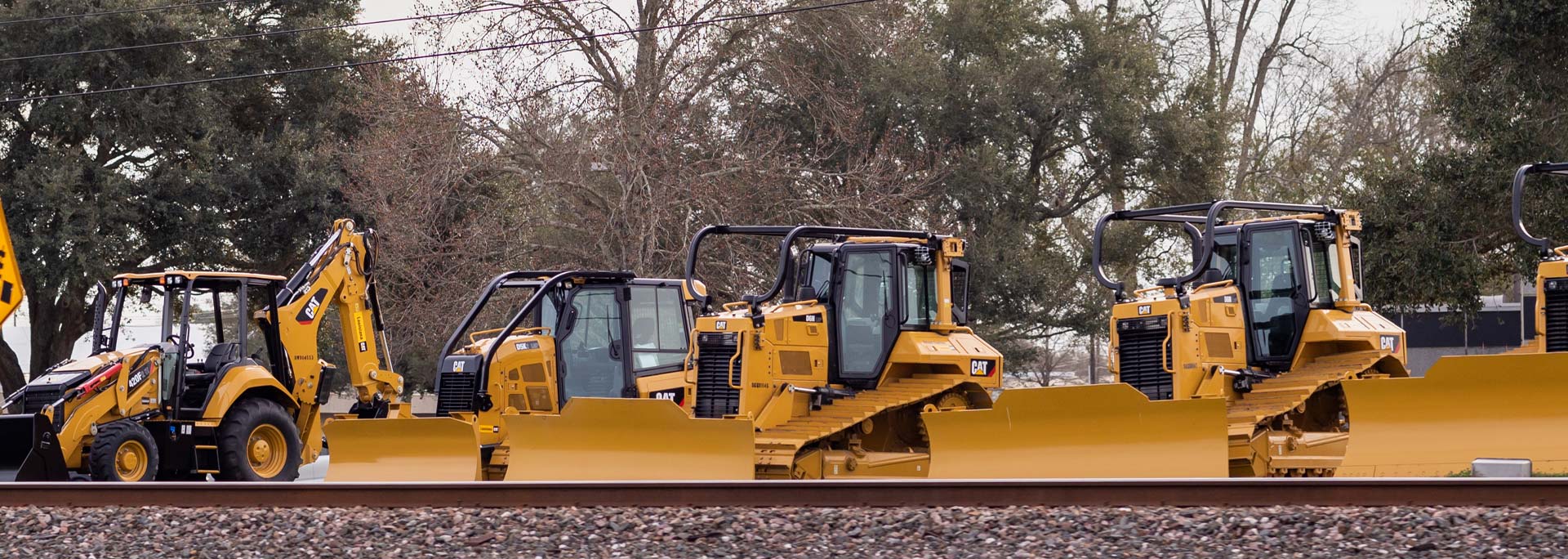
What Are the Applications of a Motor Grader?
Motor graders have different applications in various industries. Some of them include the following:
- Construction: Graders level surfaces to make the foundation for buildings like homes and other structures. These are also used with other heavy equipment for structures like basements.
- Road Works: Graders can smoothen project sites for new roads, highways, and parking lots. They are also used to maintain unpaved roads to keep them smooth and easy to drive through.
- Snow Removal: The blade attachment can be replaced with snow wings to remove excess snow from the roads. Attachments like tire chains and v-plows can provide better safety and power when handling heavily snowed areas.
- Agriculture: Farmers and agricultural sites use graders to prep soil before planting a large volume of crops. They can also use graders to make dirt tracks and roads around their land.
- Mining: Mining operations may sometimes need graders to help smoothen land and ensure the ground is even and stable. Additional attachments can be used for compacted soil that requires more power to loosen.
- Landscaping: Landscapers can use graders to create a flat yard or slopes for design purposes. Motor graders can also be used to create drainage ditches to prevent flooding.
However, not all motor graders apply to all industries, so it’s best to know the types of graders and which ones are best for your operations.
Which Motor Grader Is Best for My Needs?
With various types of graders on the market, you have plenty of options on which one to rent. We’d be happy to help you choose based on your project’s needs, but check out our table below for which size is generally best:
| Large Graders | Medium Graders | Small Graders | Rigid Frame Graders | Articulated Frame Graders | |
| What Is It? | Graders with the largest blades | Graders with mid-sized blades | Graders with short blades | Blades hinged to the frame that swings depending on the grader’s movement. | Blades controlled by a steering wheel that directs the blade’s movement. |
| Power | It offers the most power, ideal for highly-compacted debris or ground that can be difficult to penetrate and level. | High amount of power, though best for medium-sized tasks. | It has the least power and is best used where maneuverability is more important than having more power. | Used best for everyday types of grading. | Best for larger projects that require more control and maneuverability while having more reach. |
| Maneuverability | Best operated in more significant project sites, as it can be challenging to navigate in narrow areas. | Offers more maneuverability in most project sites. | It has the most maneuverable frame compared to larger graders. | Has an average type of maneuverability. | It offers more maneuverability despite its size, as the wheels can be pivoted using steering wheels. |
| Best For: | |||||
| Construction | Large-scale construction projects like condominiums, high-rise towers, large complexes, etc. | Mid-sized construction projects where less power is needed. | Small construction sites where navigation is more important than more powerful grading. | ||
| Road Works | Best for roads and highways, as it offers the best level of reach. | Can be used for unpaved roads and tracks around the farm to ensure smooth pathways. | Has the shortest turn radius, making it best for road works that involve corners and cul-de-sacs. | ||
| Snow Removal | Ideal for highly-compacted snow that requires more power to move. | It can be used on most roads and highways, especially with additional attachments for snow and winter use. | It can be used for snow removal in smaller streets and unpaved areas. | ||
| Agriculture | Best used for everyday grading tasks in the agricultural industry. | ||||
| Mining | It offers the most power, especially for compacted ground and deeper mining projects. | ||||
| Landscaping | Best for landscaping as it offers better maneuverability for yards, gardens, etc. |
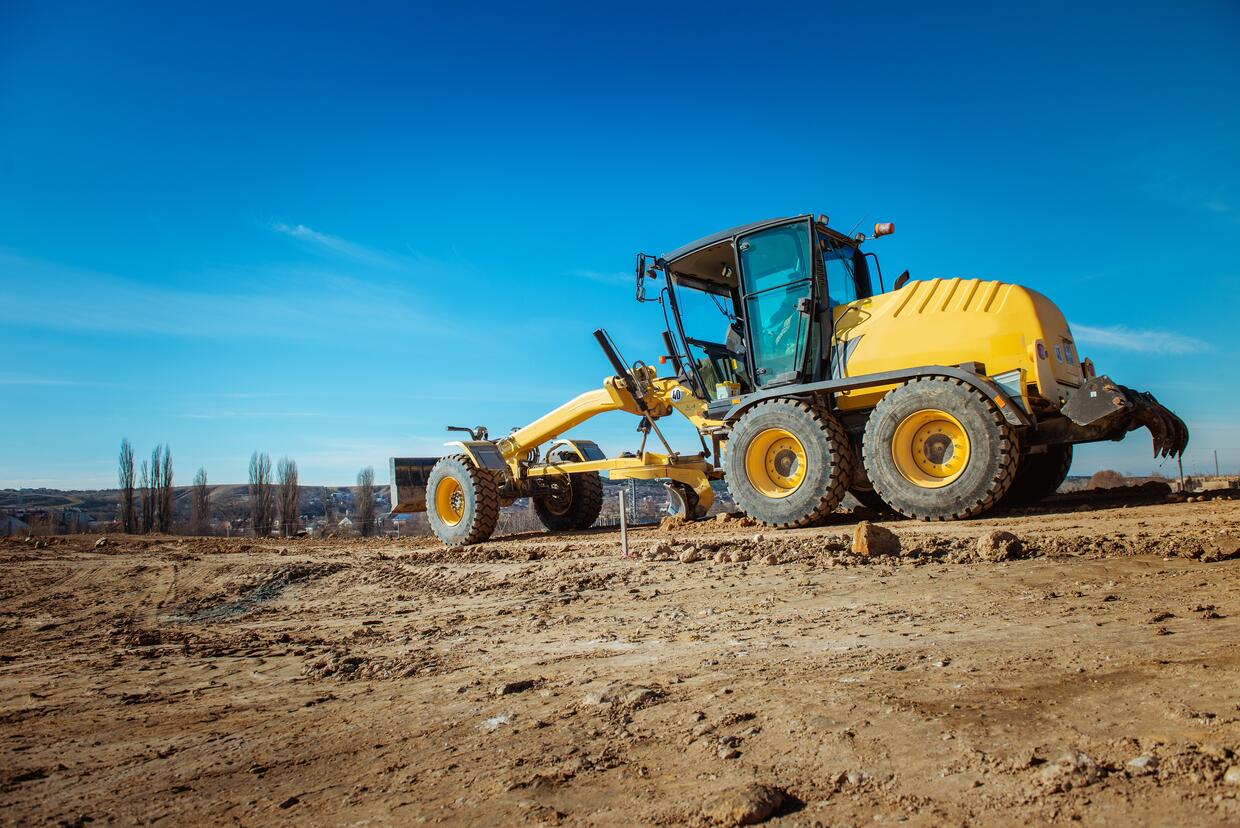
Why Should I Rent Motor Graders?
Having the right equipment and tools for your project primes you for success. Rather than performing your tasks manually, our state-of-the-art industrial equipment provides better solutions to get the job done. Some reasons to rent motor graders for your duties include the following:
- Cost-Effective Solutions: Buying your grader involves a costly equipment investment. On top of that, you will need to pay for maintenance, parts replacement, and other repairs as necessary. Because of the nature of graders, it could be a while before you get your return on investment. In comparison, renting only requires you to pay for its use when it’s needed for a project.
- No Maintenance: Maintenance, repairs, and parts replacement can require exhaustive time, effort, and money out of your operations. If your unit is down, you also risk downtime, which could affect your productivity and client satisfaction. By renting your motor grader, you can ensure you’re working with units in good condition without the additional steps.
- Improved Efficiency: There are other ways to perform grading and sloping on your project site, but it can exhaust time and affect your team’s productivity. Having valuable industrial equipment at your disposal can minimize the back-breaking labor your team has to perform, boosting productivity and efficiency while reducing the risk of workplace accidents and downtime.
- Versatile Services: Industrial equipment like our motor graders are suitable for specialized tasks you may not initially provide because you don’t have the means to do it yourself. Your team can offer your clients more services, a shorter turnaround time, and better output when you have the equipment that makes your operations more manageable.
- Easier Transportation Solutions: It’s much more efficient to rent your equipment and deliver them to your project’s site than handle the logistics yourself. With your heavy equipment, you’ll be responsible for the costs and documentation required for transporting them around. At National Dispatching, we service the entire United States and deliver your equipment through our qualified partner network.
Rent Quality Earthmoving Equipment from National Dispatching Today
Graders are a valuable tool to have in various industries. However, which unit you rent and its specifications can impact your project’s quality, productivity, and budget, so choosing which one is best for your operations is crucial.
With National Dispatching, you have one trusted source for procuring and delivering your equipment rental needs. We’ve been operating for over 12 years and have served over five thousand projects across the United States. Trust our team to deliver solutions for your project’s success.
Rent our motor graders and other earthmoving equipment at competitive rates today. We offer daily, weekly, and monthly rental options to cater to your project’s timeline.

